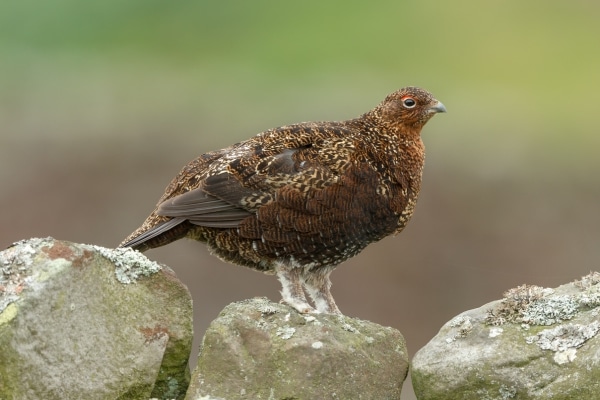
MSPs dissect Scottish grouse Bill in first evidence session
BASC was present at the first of several oral evidence sessions of the Wildlife Management and Muirburn (Scotland) Bill last week in the Scottish Parliament.
Get information on the legal shooting season for mammals and birds in the UK.
Learn about our current conservation projects and how you can get involved.
Comprehensive information and advice from our specialist firearms team.
Everything you need to know about shotgun, rifle and airgun ammunition.
Find our up-to-date information, advice and links to government resources.
Everything you need to know on firearms law and licensing.
All the latest news and advice on general licences and how they affect you.

The stark impact of the pandemic on lowland deer management has been revealed by a new survey commissioned by the Lowland Deer Network Scotland (LDNS), supported by BASC.
The LDNS survey findings detailed a 40% reduction in the number of lowland deer culled in Scotland in 2020/21 compared to the previous year.
Following more than 100 responses, the survey found that roe deer accounted for the majority those culled. Red, fallow and sika deer also featured in the cull figures.
Decline due to travel restrictions
Both BASC and the LDNS attributed the decline in the deer cull to travel restrictions which were imposed as a result of the pandemic. Other factors at play included increased utility of the countryside by the public, and a slump in the demand for venison, also due to the impact of Covid.
The survey results indicated that the least impact was felt by deer managers living in the same local authority area as their stalking grounds. These community deer stalkers were able to cull 66.5% of the deer managed in the previous year. This was a far greater proportion than deer stalkers required to travel further afield.
Resilience is key
BASC and LDNS are using the findings to make the case for more community deer management in Scotland.
The figures returned by the survey support this move. In fact, recreational stalkers from outside Scotland shot just 18.4% of the number of deer culled in the previous year throughout the 2020/21 season. Cull numbers increased slightly for those travelling within Scotland to a stalking ground in a different local authority area, at 54.6%.
The survey findings will see LDNS and BASC press the need for resilience in future lowland deer management, in which local community involvement will be key.
Read the full press release here.
Need advice on deer management? Contact our deer team here.

BASC was present at the first of several oral evidence sessions of the Wildlife Management and Muirburn (Scotland) Bill last week in the Scottish Parliament.

This year’s GWCT Scottish Game Fair hosts a huge array of attractions across all three days. Check out our top 10 for the weekend ahead.

BASC and the British Deer Society have launched a campaign on the importance of giving pregnant deer and their newborns space at this time of year.
Sign up to our weekly newsletter and get all the latest updates straight to your inbox.
© 2023 British Association for Shooting and Conservation. Registered Office: Marford Mill, Rossett, Wrexham, LL12 0HL – Registered Society No: 28488R. BASC is a trading name of the British Association for Shooting and Conservation Limited which is authorised and regulated by the Financial Conduct Authority (FCA) under firm reference number 311937.
If you have any questions or complaints about your BASC membership insurance cover, please email us. More information about resolving complaints can be found on the FCA website or on the EU ODR platform.
This website uses cookies so that we can provide you with the best user experience possible. Cookie information is stored in your browser and performs functions such as recognising you when you return to our website and helping our team to understand which sections of the website you find most interesting and useful.
Strictly Necessary Cookie should be enabled at all times so that we can save your preferences for cookie settings.
If you disable this cookie, we will not be able to save your preferences. This means that every time you visit this website you will need to enable or disable cookies again.
This website uses Google Analytics to collect anonymous information such as the number of visitors to the site, and the most popular pages.
Keeping this cookie enabled helps us to improve our website.
Please enable Strictly Necessary Cookies first so that we can save your preferences!
More information about our Cookie Policy